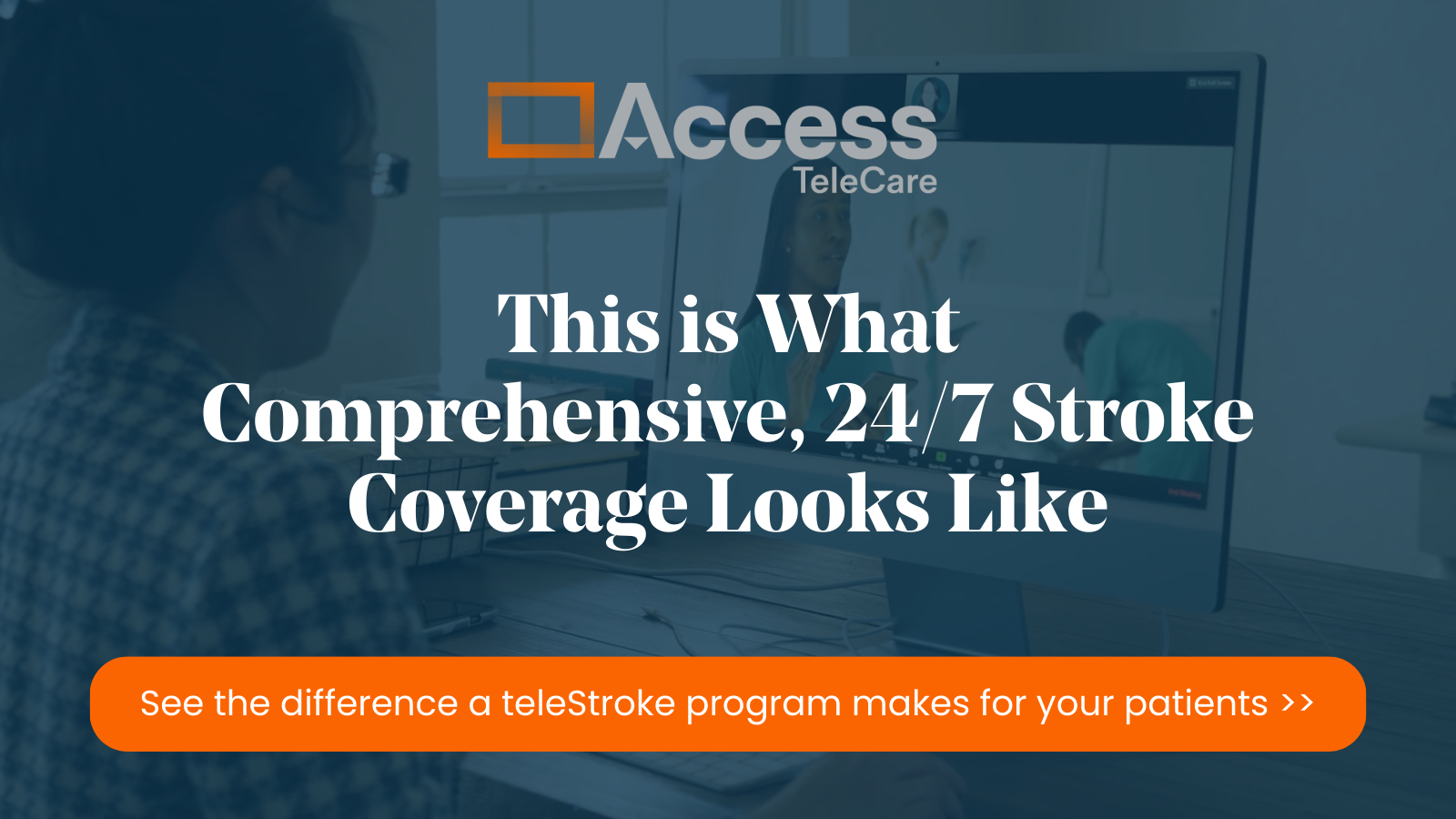To observe the story of Dr. Elaine Jones’ career over the past 20 years is, in many ways, to hold a mirror to the story of practicing neurology in America: from launching an independent practice, to finding that practice increasingly beset by administrative and regulatory hurdles, to bringing in a telehealth group to help with coverage, and eventually to joining that telehealth group.
Today, Dr. Jones is a teleNeurologist with Access TeleCare, which she says suits her passion for travel and desire for flexibility well. She has fly fished on the Amazon, gone scuba diving in Thailand, and, in order to ensure she keeps up her in-person clinical skills, worked locums shifts in Alaska. She is also on the Board of the American Academy of Neurologists, and in 2017 she won AAN’s prestigious Kenneth M. Viste, Jr., MD Patient Advocate of the Year Award.
Needless to say, Jones’ career is thriving.
“As much as I rave about this, it is not right for everybody,” Jones said in a recent interview, speaking of her role at SOC. “But, it suits me well.”
Practicing Neurology in a Solo Practice
Jones did her residency at Brown, in Rhode Island. When she finished, she worked for Roger Williams Medical Center in Providence for several years before starting her own practice. She went into business for herself for the same reasons many physicians do: she wanted independence, to have some control over her own career.
“I realized I could do this myself from my own practice and not have all these administrators above me,” Jones said.
She went solo in 2005, while partnering with other independent neurologists to cross-cover each other at the region’s community hospitals. For a while, this worked: there were plenty of neurologists and her work-life balance was exactly what she’d hope for in going independent.
But it didn’t last. Neurologists are an aging population in a tough field, with lower pay than other specialties and growing demand. Meanwhile, the regulatory and financial pressures mounted. Jones said the “meaningful use” requirements of the Affordable Care Act added to the headaches and were tough to keep up with while being small and independent. Electronic records, growing IT burdens, and guarding against the risk of HIPPA violations: it all started to get to her.
“I was a small little solo practice,” Jones said. “I couldn’t afford big high-tech IT. Those are the things I lost sleep over.”
Practicing Neurology in Partnership
One by one, the other independent neurologists who were covering hospital shifts either moved, retired, or joined larger groups.
In 2013, the Journal of Neurology published an analysis of the United States’ neurologist workforce: there were 16,366 neurologists in a country that needed about 1,700 more, a shortfall of approximately 11 percent. By 2025, that shortfall was projected to be 19 percent.
Where Jones lived in Rhode Island, there was a core group of five neurologists, she said, who cooperated to cover four hospitals in the area. The year after the Journal of Neurology study, Jones decided they needed help—she helped bring in Access TeleCare to help manage coverage.
Practicing Neurology with Telemedicine
SOC’s teleNeurology program helped balance the workload for Jones and the other neurologists in the area, making sure coverage was available where and when it was needed. SOC’s platform is built to allow both the hospital physicians and SOC physicians to work shifts, in addition to independent or other contracted groups.
So, in addition to running her own practice, Jones began doing teleNeurology shifts on the side, working part-time for SOC. The change in lifestyle was immediate, and positive. Jones traveled to Spain, where she signed on and worked shifts virtually. Then she traveled to Japan, and did the same.
In 2016, Jones closed her practice for good, and joined SOC full-time.
Practicing Neurology as a teleNeurologist
Jones said SOC isn’t immune to national challenges in delivering healthcare. Yet despite those challenges, “they have really delivered on what they promised. They understand why a lot of us came to SOC for the work-life balance, for some independence, and the flexibility. They are really focused on that and maintain that.”
She has taken on leadership roles, chairing SOC’s credentials committee and serving as vice-chair on the quality committee. She moved from Rhode Island to South Carolina in order to better help take care of her aging parents. She still occasionally travels to do locums work. And, she is part of an AAN-sponsored team that travels to Haiti to train and assist in taking care of patients in Port-au-Prince—Jones herself has made the trip about 20 times.
And then, there was the Amazon. “The Amazon was the best trip I’ve ever had in my life,” Jones recalls.
It was just before the pandemic hit. She went as part of a group, flying into the Manaus region of Northwest Brazil, then going by private plane to a lodge in the middle upper extremes of the Amazon, where she fished for Peacock bass.
“I like to get up early, and I remember getting up in the morning, you could go out, the lodge was built up on this bank over the river. There was a bench set up where you could do a little bit of fishing from the dock. Sitting there with a cup of coffee, watching the sunrise over the Amazon, watching somebody fish off a dock—I keep that image in my head,” Jones said. “It wasn’t anything dramatic. It was just so beautiful. To me, that’s what life is about. Those moments.”
Jones has more trips planned for when the pandemic ends, from returning to Alaska to taking cooking classes in France. In April, she’s got a trip on the books to the Philippines for scuba diving. She’s crossing her fingers it doesn’t get canceled.
“It’s planned. It’s booked. It’s bought. It better happen. That’s all I can say. Let’s hope.”
****
If you are a neurologist seeking work-life balance, submit an application on our careers page. We can’t promise you’ll fly fish in the Amazon, but you’ll join our 200+ physician practice and help us deliver expert care virtually for over 850 facilities nationwide.







